I made apple-cider doughnuts in my air fryer, and they were a messy delight
Gabbi Shaw

- Air fryers are a great way to make dozens of dishes, including baked goods.
- One of the coziest treats is an apple-cider doughnut.
Once the weather drops below 65 degrees in New York City, I immediately begin craving an apple-cider doughnut.
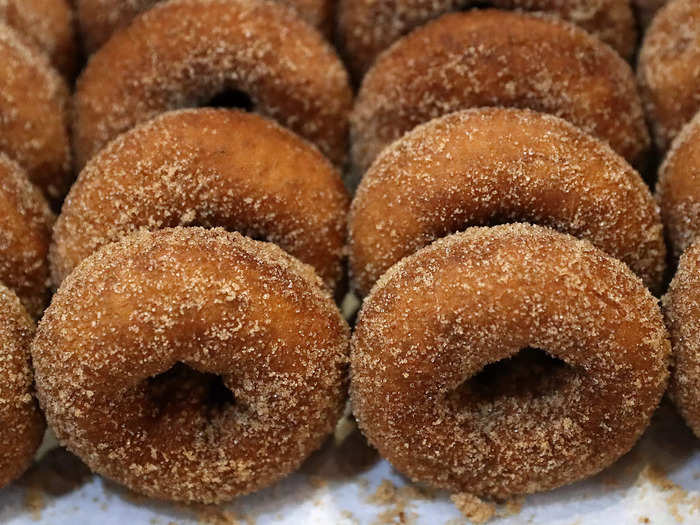
While these might be considered a fall treat, I'd enjoy them year-round if I could ... and now that I'm in possession of an air fryer, I can.
In general, I find my air fryer to be a very convenient and quick way to prepare food, although I didn't have much success with my air-fryer brownies. But, I wasn't deterred from trying to make other sweet treats.
So, armed with this recipe from The Kitchn, I decided to try my hand at making apple-cider doughnuts in an air fryer.
Here are the ingredients I needed for my apple-cider doughnuts.
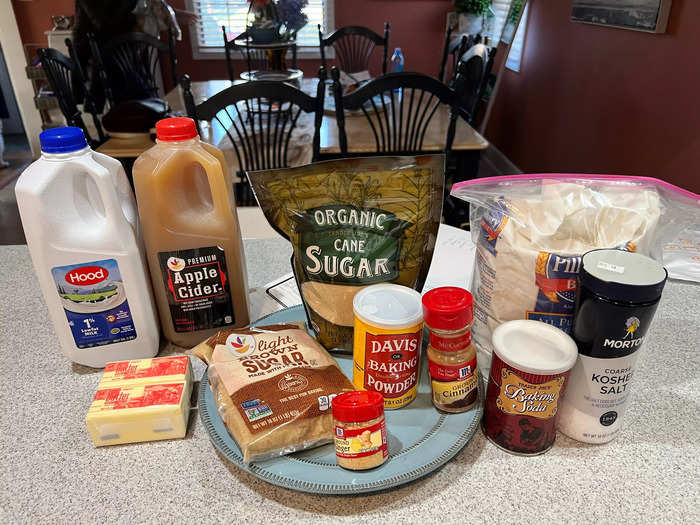
The recipe called for milk, apple cider, sugar, flour, salt, baking powder, baking soda, ginger, cinnamon, light brown sugar, and butter.
The first step was to measure out the two cups of apple cider needed.
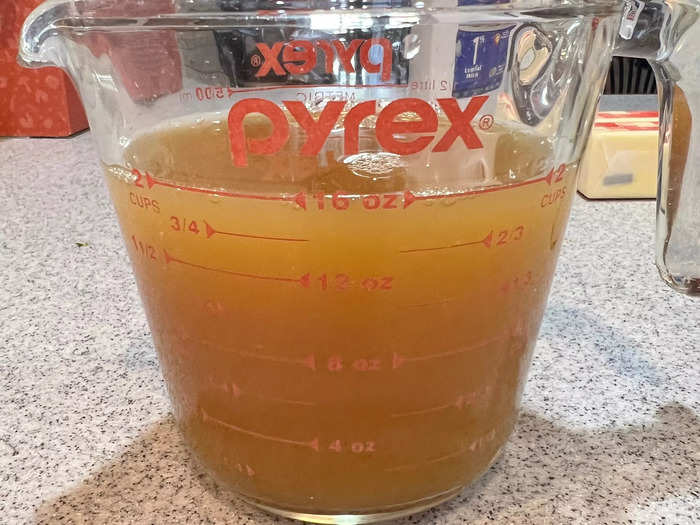
If that seems like a lot, you're right. Half of this will get reduced when it boils on the stove.
The instructions were to bring the apple cider to a boil and and reduce it to one cup.
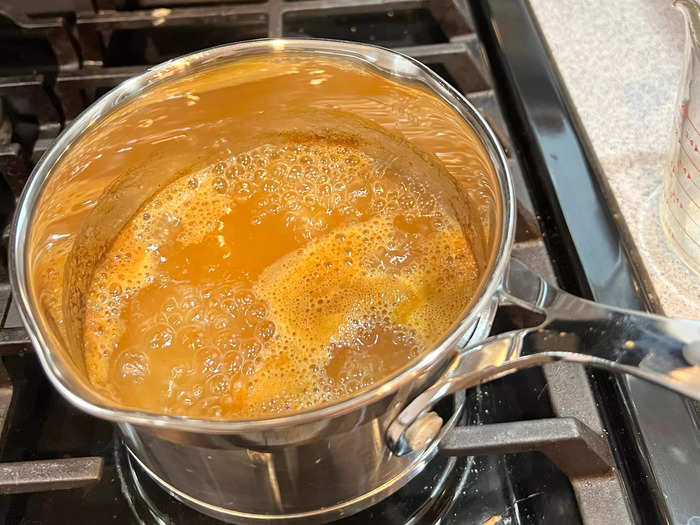
The hot apple cider made my kitchen smell wonderful, and made me even more excited for my doughnuts.
While that was going on, I combined all the dry ingredients.
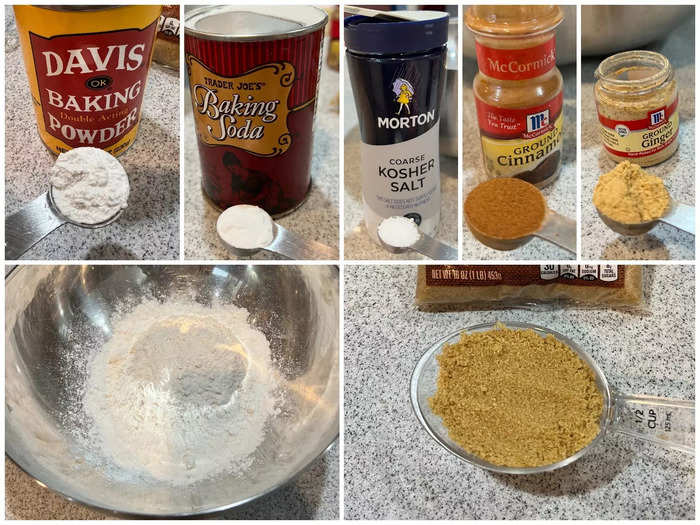
Specifically, here's what I needed:
- 3 cups all-purpose flour
- 1/2 cup packed light brown sugar
- 2 teaspoons baking powder
- 1 teaspoon ground cinnamon
- 1 teaspoon ground ginger
- 1/2 teaspoon baking soda
To add a little texture, I was instructed to grate a stick of butter.
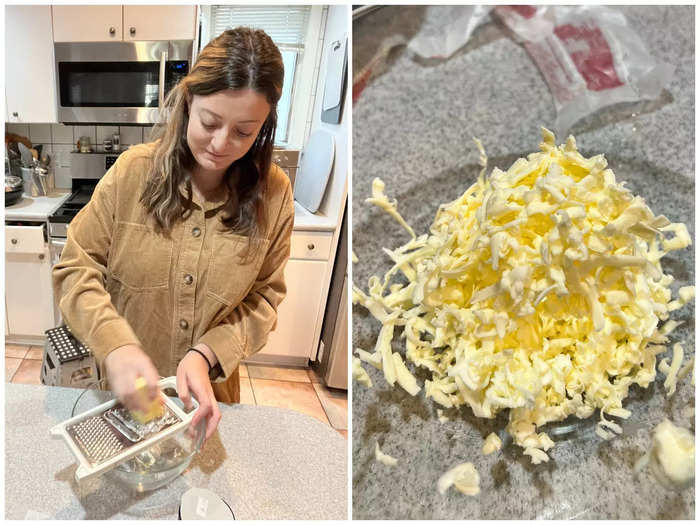
This proved to be more difficult than I thought. The eight tablespoons, or one stick, of cold butter was definitely not cold by the end, making it hard to grate it without my hands slipping around. I must've washed my hands three times during this process, just to make them less greasy.
The next step was to combine the butter with the dry ingredients until the mix was the "texture of small pebbles."
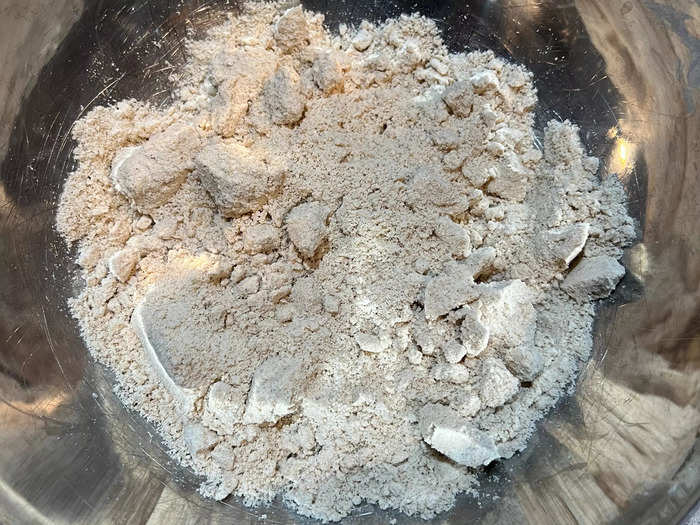
I used my hands to combine the butter with the dry ingredients until it almost looked like sand. I don't think this was as "pebbly" as the recipe called for, but I had to give up when the butter was entirely saturated with the dry ingredients.
Time to focus back on the apple cider. I measured how much reduced cider I had and set it aside to cool. Then, I made a hole in the middle of the mix.
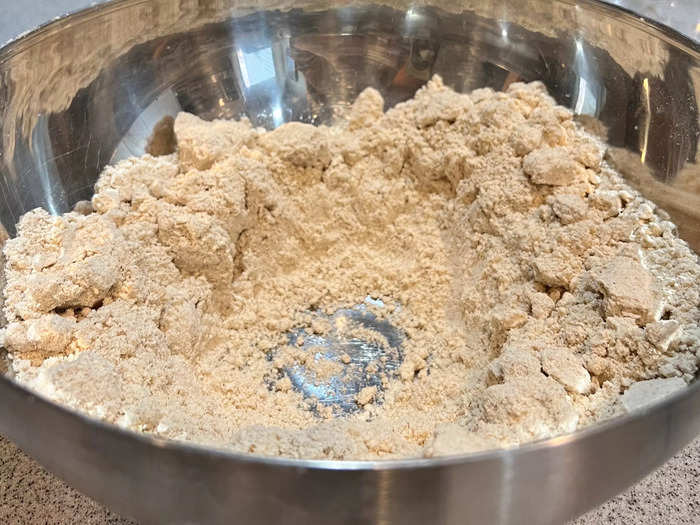
After it was down to a little over one cup of apple cider, I let it sit in the fridge for five minutes to cool it down. Then, I created the well in the dry ingredients.
Next up was adding the wet ingredients: the apple cider and milk. Then, I mixed.
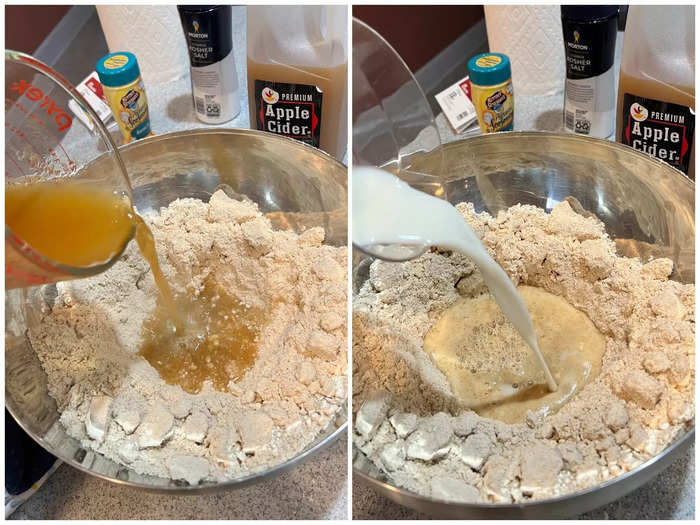
I added my one cup of cooled, reduced apple cider and 1/2 cup of cold milk to the mixture.
When all was said and done, here's what the fully mixed dough looked like.
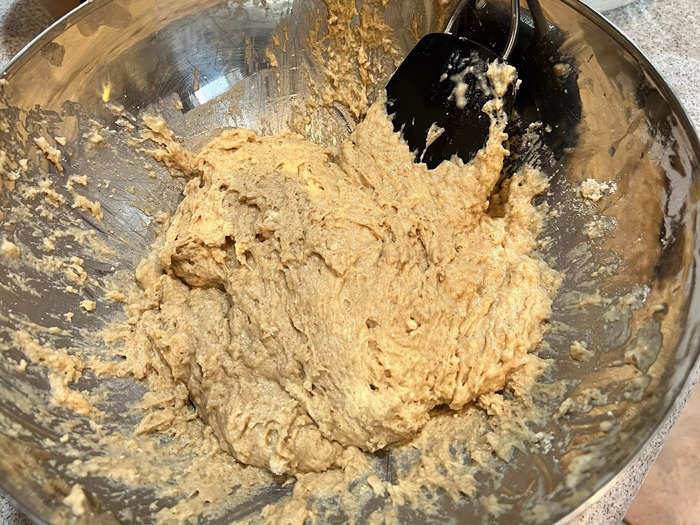
I used a spatula to combine everything, which definitely was an arm workout. But when all the ingredients were combined, my kitchen was starting to smell mouth-wateringly good, so I didn't mind.
Here's where it started getting really messy. I had to take the dough out of the bowl, find a large flat surface, and coat it in flour so the dough wouldn't stick.
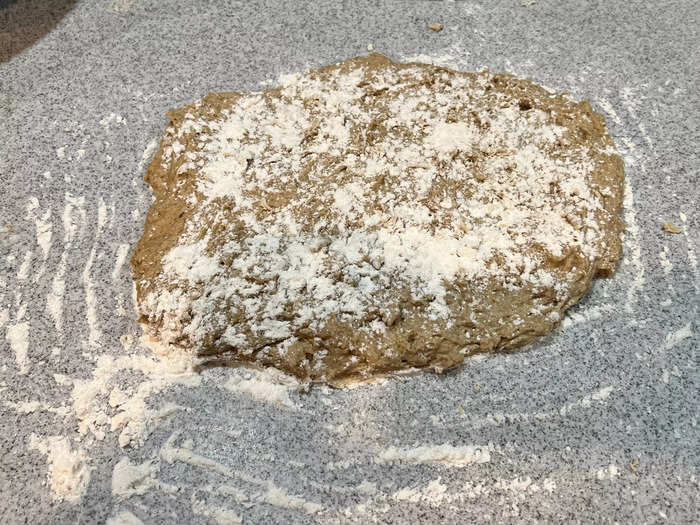
I ended up using a huge cutting board that my parents had in their kitchen. I wiped it down and proceeded to cover it in flour, so the dough wouldn't stick everywhere. Then I added more flour to the top, so when I started folding the dough, it wouldn't stick to itself.
I also had to coat my hands in flour so I could fold and knead the dough easily.
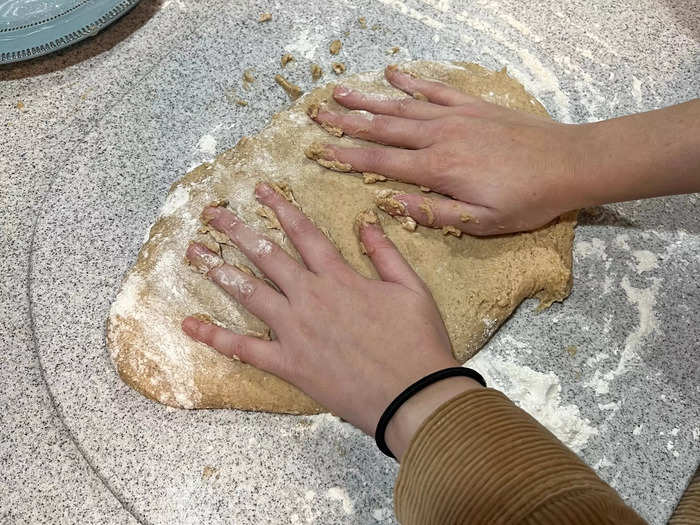
The recipe said to spread the dough into an even, 1-inch thick layer, and fold it onto itself six times until the dough was "slightly springy." Trust me when I say flour was getting everywhere.
Here's me and my new pride and joy: the flattened dough. It was ready to be made into doughnuts.
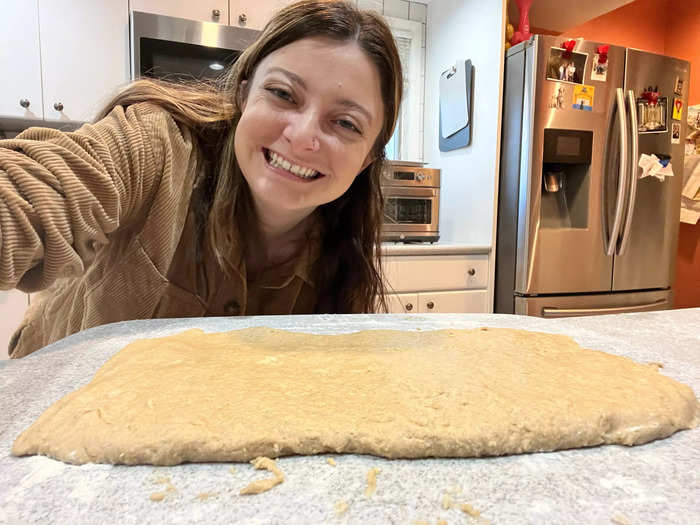
After folding and folding, it was time to spread the dough one last time. This was the final product.
Not pictured: the huge mess I'd made with all the ingredients, all the paper towels from my numerous hand-washing pauses, and the multiple bowls for all the ingredients. Plus, a thin layer of flour had settled into everything.
The recipe called for using a doughnut cutter to achieve the typical doughnut circle. I don't have one of those, so I settled for a glass with a flour-coated rim.

This is a doughnut cutter, a great gadget for anyone who regularly makes doughnuts. Unfortunately, I am not one of those people, so I was forced to make do with what I had. And what I had was a glass that was around the size of a doughnut.
Of course, every doughnut needs a hole. Cue this shot glass, again coated in flour.
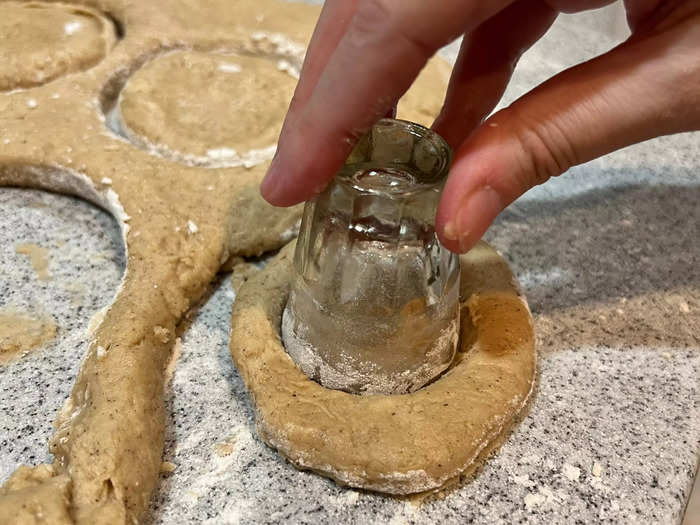
In retrospect, I needed either a wider glass or a smaller shot glass for this to work.
To firm up the doughnuts, I threw them in the fridge for 30 minutes.

As you can see, they look a little noodly.
It was time to put them in the air fryer. The recipe recommended the air fryer be at 375 degrees. Mine doesn't do five-degree intervals, so 380 degrees it was.

Here they are, fresh out of the air fryer. They were in there for 12 minutes, flipped halfway through.

I was a little concerned that the doughnuts would be crunchy as they looked a little well-done.
To get the cinnamon sugar sticking to the doughnuts, the recipe told me to dunk the doughnuts in butter, and then coat them in cinnamon sugar.
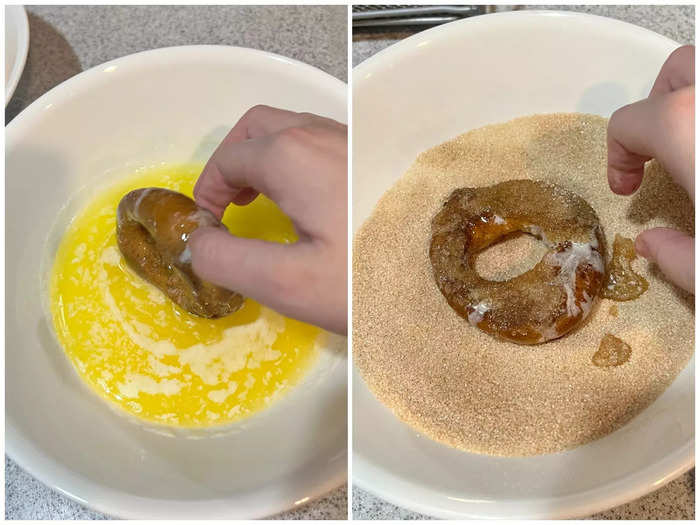
While the doughnuts had been frying, I melted another stick of butter in one bowl, and combined cinnamon and sugar in another for the coating. After the doughnuts had cooled a bit, I dipped them in the butter bowl and then rolled them around in the cinnamon sugar, one by one.
All that was left to do was let them dry.
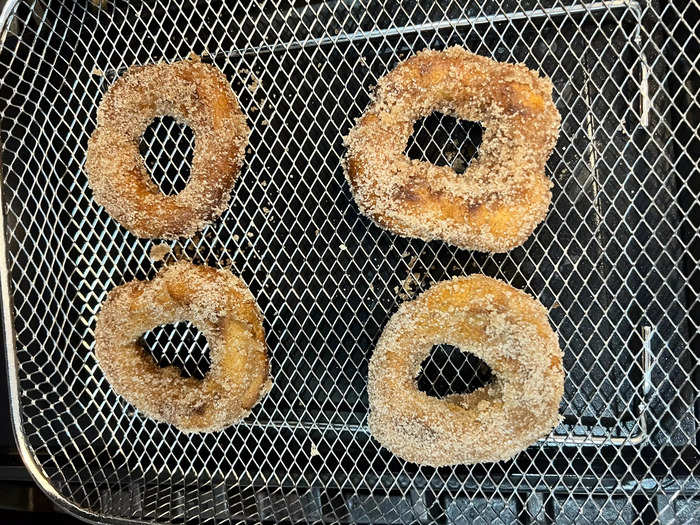
The cinnamon sugar didn't stick as well as I'd hoped, so my stove was covered in cinnamon sugar.
While these were tasty, they weren't perfect. For my next batch, I tried something different.
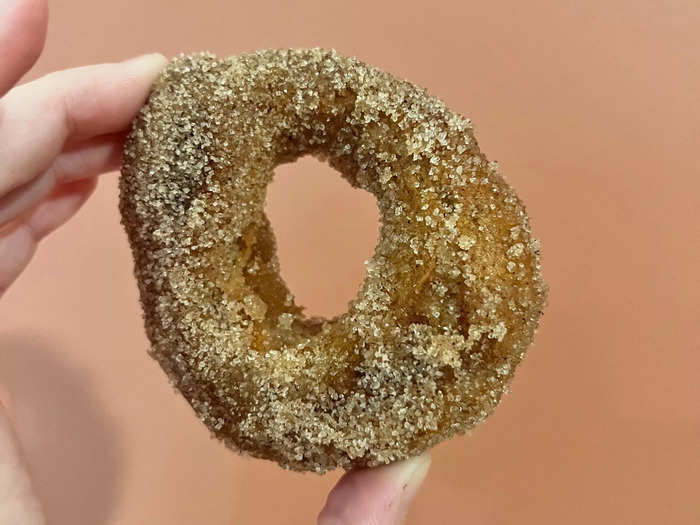
These doughnuts just weren't fluffy. They tasted amazing — I was really able to taste the ginger and apple cider in the dough, which complemented the cinnamon sugar quite nicely — but the texture wasn't right.
This batch had already been on the crunchier side, and when I left them out to settle, they had gotten even harder.
For the second round, I used a larger glass to cut out the doughnuts, making them a little thicker. They turned out just right.
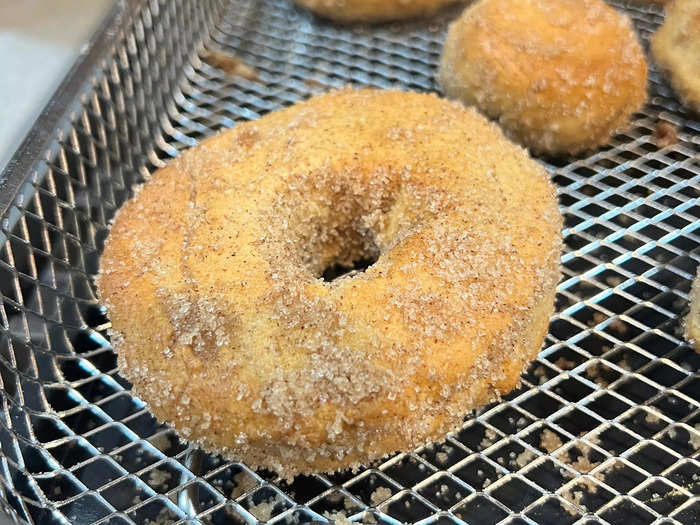
Now this was what I had wanted. This batch was cakey and moist, and the cinnamon sugar stuck better as well. My family, aka my taste-testers, agreed this batch was better.
I also put these ones away in a sealed container much faster, which helped them stay softer longer.
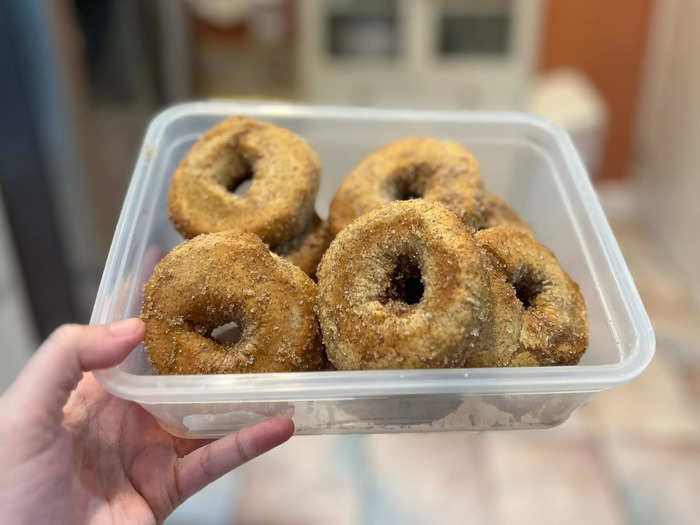
Overall, the second (and third and fourth batches ... this recipe really made a lot of doughnuts) turned out much better. The taste and texture were greatly improved by the thicker cutouts and the immediate transference to Tupperware.
Even though these doughnuts created a small tornado of sugar, cinnamon, and flour in my kitchen, I'd make them again in a heartbeat.

I've made air-fried doughnuts before using premade biscuit dough, and while they were good, they just didn't taste like doughnuts. These were the perfect solution to my year-round apple-cider doughnut cravings, and it didn't involve dunking dough into a vat of oil.
Popular Right Now
Popular Keywords
Advertisement